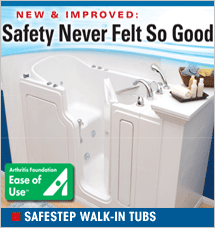
Retinitis pigmentosa (RP), age-related macular degeneration (AMD) and cataracts impair the eyesight of many seniors reducing their quality of life. Retinitis pigmentosa results in gradual loss of peripheral vision and night vision, and later of central vision. Age-related macular degeneration is a deterioration or breakdown of the eye's macula, the small area in the retina that is responsible for central vision that allows seeing fine details clearly. Cataracts are the leading cause of blindness and affect tens of millions of people worldwide.
The Argus II Retinal Prosthesis System (Argus II), developed for retinitis pigmentosa by Second Sight in Sylmar, California, is designed to stimulate a patient's remaining retinal cells. This allows them to obtain useful visual information. Also known as the bionic eye or the retinal implant it can be used by people with advanced RP.

The scene is captured by a small video camera located in the patient's glasses. The video is sent to a small patient-worn computer, or video processing unit (VPU), where it is processed and transformed into instructions that are sent back to the glasses via a cable. These instructions are transmitted wirelessly to electrodes implanted on the surface of the retina. The signals are then sent to the electrode array that emits small electrical pulses. These pulses bypass the damaged photoreceptors and stimulate the retina's remaining cells to transmit the visual information along the optic nerve to the brain to create the perception of patterns of light. Patients learn to interpret these visual patterns.
The device can help adults with RP who have lost the ability to perceive shapes and movement to be more mobile and to perform day-to-day activities. The Argus II system is intended for use in adults who have bare light perception, that is can perceive light, but not the direction from which it is coming or no light perception in both eyes. Activities possible include detecting the direction of a motion; recognizing large letters, words, or sentences; detecting street curbs; and walking on a sidewalk without stepping off.
In February 2013, the Argus II implant was approved by the Food and Drug Administration (FDA), for use in the U.S. Canadian approval came in December, 2014. It will be initially offered in 16 major markets across the U.S. and Canada to treat patients with late stage retinitis pigmentosa.
Now researchers in the United Kingdom are looking at the technology for dry AMP that does not involve any leakage of blood that affects 85% to 90% of the cases of AMP. So far, early results are extremely promising in testing carried out at the Manchester Royal Eye Hospital. It could provide a new solution for the estimated two million people who are legally blind due to AMD.
Cataracts are another malady facing seniors. While today cataract surgery that removes the cataract by scalpel or laser is quite routine; things could get even simpler in the future. New research suggests a less invasive solution might be a naturally-occurring molecule that can be administered through a simple eye drop. Scientists had suspected that a molecule called lanosterol may have a role in the onset of cataracts.
This suspicion was confirmed at China's Sun Yat-sen University. This molecule might prevent cataract-forming proteins from clumping in the eyes. So far eye drops containing lanosterol were given to dogs suffering from naturally occurring cataracts. Following six weeks of treatment, there was a reduction in both the size and cloudiness of the cataracts.




























































